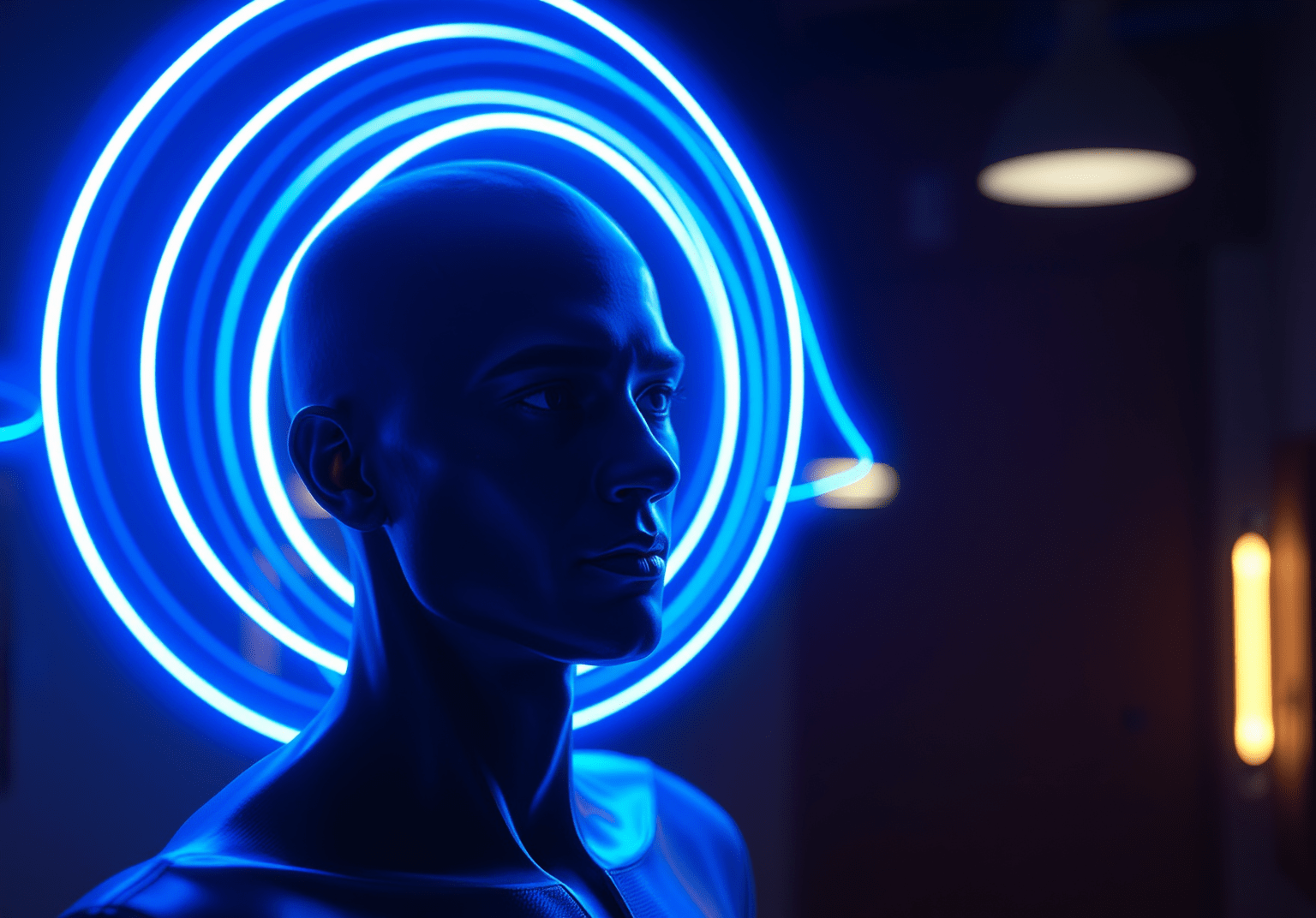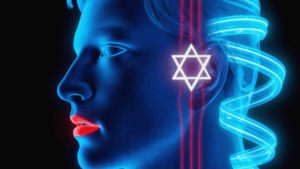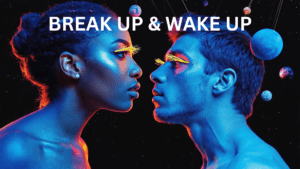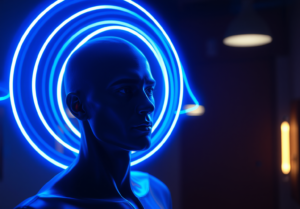I am flying to Rome in a few weeks and will stay in Europe for the summer, so it’s only fair to start this article with the famous saying, “All roads lead to Rome.” While its origins trace back to the Roman Empire, where the vast network of roads indeed converged on the Eternal City, the saying has since transcended its literal meaning. What I am about to say is this:
There are many paths to enlightenment… and all eventually lead to enlightenment…
The journey of Olga — my avatar in this 3D reality — was rocky and filled with endless experiments, truly mind-bending experiences, and profound “channeled” insights. Some of them I share through various media. It’s a journey that weaves together the shattered fragments of reality and my many attempts to dissolve the illusion of separateness (some ended up being more successful than others). It has been a rich pilgrimage “inward” (that is not any different than “outward” – both are the same, in the grand scheme of things).
Many historic, mythical, and religious figures, celebrities, sages, and teachers have wandered through the same quest, searching for that soul refuge where the mind quiets and the heart knows. We imagine them as luminous beings, serene and unwavering, but their journeys were often anything but peaceful.
Take Siddhartha Gautama, who became the Buddha. Born into opulence and splendor, sheltered from suffering, he dared to walk away from it all — his palace, his wife, his newborn son — driven by the gnawing void that wealth could not fill. He wandered through the dense forests of Northern India, practicing brutal asceticism, tormenting his body to discipline his spirit. Yet enlightenment did not strike as a response to his pain. Only when he sat beneath the Bodhi tree, surrendering the quest itself, did silence finally engulf him — the kind that stretches beyond comprehension, where even seeking dissolves.
Then there is Jesus of Nazareth, who, it is speculated, traveled east during the early years of his adult life — to India, Persia, or Tibet. He studied with sages and monks, absorbing ancient teachings before returning to his homeland to ignite a spiritual revolution. Perhaps it was in these eastern sanctuaries that he first encountered the knowledge and the experience of oneness and divine love, blending them into his message of radical compassion.
And then there are many modern seekers-turned-teachers who drank from the well of Zen and dared to question the assumptions of Western thought.
Some found their awakening in the embrace of an Indian guru, while others, like Eckhart Tolle, stumbled into it through despair so profound that surrender was the only option left. Each story weaves a different pattern, but they all share the essence of profound letting go.
So, what is it we are letting go of, eventually, after all the exquisite heartbreaks and ecstatic realizations?
Basically, the main thing to let go of is the idea that we are this body.
In this particular article, I don’t want to touch on our perception of physiology, psychology, neurology and all other “ologies”. I feel like approaching it today from a more energetic standpoint.
The most common concept that the mind refers to as we speak about energy in the body is energetic chakras.
The chakra system has ancient roots in the spiritual traditions of India and is most closely associated with early Hindu and Yogic texts, particularly the Vedas and Upanishads, which date back as far as 1500–500 BCE.
The concept of chakras was further developed in Tantric traditions (around 600–1300 CE), where the system of seven primary chakras became more formally structured. The Kundalini Yoga and Hatha Yoga traditions elaborated on the chakras as centers of energy and consciousness within the body.
The oldest known texts that directly discuss chakras include the Yoga Kundalini Upanishad and the Shat Chakra Nirupana, written around the 16th century CE. These texts describe the seven primary chakras and their associated symbols, colors, and mantras.
While the chakra system is rooted in ancient spiritual practices, the modern interpretation and popularization of chakras (like their association with specific colors and psychological aspects) largely emerged through the New Age movement in the 20th century.
How Has the Chakra System Been for Enlightenment?
- Kundalini Yoga: Practitioners focused on awakening the Kundalini energy (coiled at the base of the spine) and guiding it through the chakras to reach the crown chakra (Sahasrara). This process was believed to dissolve the ego and merge individual consciousness with universal consciousness.
- Meditation and Pranayama: Techniques like Pranayama (breath control) and Dhyana (meditation) were used to purify and activate each chakra, leading to heightened awareness and self-realization.
- Mantra and Visualization: Reciting Bija mantras (seed sounds) and visualizing the associated yantras (geometric shapes) were methods to harmonize and awaken each energy center.
Within the MetaMind Bend Model that I have developed as my own “road to Rome”, we don’t work with the Chakra system. But I understand that many practitioners are comfortable with this familiar approach, so I will attempt to match SOME of the Mesa Anchors which we deconstruct during our work with energetic centers in the human body — chakras. (If you are new to the MMB and not clear on what Mesa Anchors are, please download the MMB Manual and order Identity Gap Assessment to understand how to work with it as a tool for liberation).
The essence of our approach is not just to unblock but to un-anchor from deeply ingrained constructs that keep you anchored to the perception of limited identity and all perceptual errors associated with it. Instead of moving energy through centers, we liberate consciousness from “nodes” that anchor your experience. From the MMB perspective, unlike how a traditional chakra system possibly would portray it, true freedom is not found in alignment but in un-anchoring.
MMB offers un-anchoring tools that can be used at any point in life when we face any limitation that doesn’t match our attempt to “manifest” desired outcomes.
Reframing the Chakra System as Mesa Anchors in the MMB Model
1. Root Chakra → Fear & Attachment Mesa Anchors
Original Concept: Blockages manifest as survival fears or disconnection from the body.
MMB Reframed View: The Fear Mesa Anchor reduces unlimited consciousness to the illusion that physical security is the ultimate priority. It cements awareness to survival-based reactions, keeping you in a low-frequency state of anxiety and primal fear. The Attachment Mesa Anchor compounds this illusion by latching onto material stability and control, convinced that your existence depends on external conditions.
Transformation: Un-anchor by directly questioning the reality of security itself, investigating and exposing its interconnectedness with all other Mesa Anchors in the MMB Model. Recognize that your essence transcends survival concerns. Deconstruct the fear narratives by examining how they emerged and why they continue to dominate. Release the illusion of stability, allowing the dynamic, spontaneous flow of reality to replace rigidity and fear. Feel the aliveness of freedom and the power that comes from being unbound by material dependency.
2. Sacral Chakra → Desire & Preference Mesa Anchors
Original Concept: Blockages manifest as self-conscious distortions or lack of self-acceptance.
MMB Reframed View: The Desire & Preference Mesa Anchor perpetuates the illusion of lack by maintaining a gap between your current state and desired outcomes. It reduces the inherent abundance of consciousness to craving, interpreting the present as inherently insufficient. Coupled with the Shame Mesa Anchor, it holds you captive to self-judgment when desires are unmet, embedding unworthiness into your core experience.
Transformation: Un-anchor by investigating and exposing the interconnectedness of your craving with all other Mesa Anchors in the MMB Model. See desire as the mind’s way of deferring wholeness. Unravel the unconscious belief that fulfillment lies anywhere but now. Dissolve shame by recognizing it as a distortion of identity — a misguided perception of personal lack. Free yourself from preference-driven suffering and discover the peace that comes from embracing the void of expectation.
3. Solar Plexus Chakra → Judgment & Projection Mesa Anchors
Original Concept: Blockages manifest as distortions related to power, manipulation, or stressful social interactions.
MMB Reframed View: The Projection & Judgment Mesa Anchors distort the way you perceive both yourself and others by projecting unresolved inner conflicts onto external situations or people. These anchors create an endless loop of external validation and dominance struggles, where your sense of power is constantly measured against the reactions of others.
Transformation: Un-anchor by examining the origin, stability points in relation to your other Mesa Anchors and the validity of your judgments. Recognize that judgment is often just a projection of internal fragmentation. See how your desire to dominate or control reflects unresolved insecurities. Dissolve the need to be seen as powerful by recognizing that true power is inherent, not acquired through manipulation.
4. Heart Chakra → Resentment & Guilt Mesa Anchors
Original Concept: Blockages manifest as difficulty expressing universal love or compassion.
MMB Reframed View: The Resentment Mesa Anchor keeps your energy stuck in past grievances and betrayals, reinforcing the narrative that you were wronged and remain powerless to change it. The Guilt Mesa Anchor anchors consciousness to self-blame, where the weight of past mistakes limits your capacity to feel love and compassion.
Transformation: Un-anchor by identifying the false sense of self embedded in resentment — a self that feels victimized and incapable of transcending hurt. Discover the truth of your own innocence and the illusion of guilt as you deconstruct all other supporting Mesa Anchors. See guilt not as moral insight but as a distorted perception of personal responsibility. Transmute these anchors through unconditional self-acceptance and liberation from the past.
5. Throat Chakra → Thought & Resistance Mesa Anchors
Original Concept: Blockages manifest as difficulties in self-expression and understanding.
MMB Reframed View: The Thought Mesa Anchor traps your mind within rigid conceptual frameworks, where ideas become stagnant and unable to evolve. The Resistance Mesa Anchor creates an internal barricade against vulnerability and openness, obstructing the flow of authentic communication.
Transformation: Un-anchor by examining your habitual thought patterns and questioning their relevance to what must be expressed or let go. Let go of beliefs that no longer serve your expanded awareness. Dissolve resistance by cultivating radical honesty and openness, allowing your expression to flow without filtering it through preconceived self-images.
6. Third Eye Chakra → Perception & Assumption Mesa Anchors
Original Concept: Blockages manifest as feelings of unworthiness or lack of vision.
MMB Reframed View: The Perception Mesa Anchor clouds intuitive clarity with predetermined interpretations, while the Assumption Mesa Anchor locks awareness into expected outcomes, blinding you to novel possibilities.
Transformation: Run a few Mesa Anchor loops (download the MMB Manual and order Identity Gap Assessment to understand how), so you un-anchor by dismantling the construct of certainty. Embrace not knowing as the fertile ground for insight. Detach from the need to predict or control reality, and allow your perception to expand beyond preconceptions. Open yourself to the mystery of being, where insight emerges spontaneously when not confined by assumptions.
7. Crown Chakra → Causality Errors & Quantum Dents Mesa Anchors
Original Concept: Blockages manifest as disconnection from universal consciousness or spiritual isolation.
MMB Reframed View: The Causality Errors Mesa Anchor binds awareness to linear thinking, where cause and effect are perceived as absolute rather than interwoven possibilities. Correlation vs causation, remember? The Quantum Dents Mesa Anchors reflect distortions created by trauma or existential confusion, leaving “dents” in the energy field and your perception of infinite potential.
Transformation: Un-anchor by releasing the obsession with causality, recognizing that reality is not constrained by sequential human logic. Integrate multidimensional awareness, where all states of being coexist and possibilities remain fluid. Heal the Quantum Dents by reconfiguring your relationship to past experiences, allowing the fullness of your infinite self to emerge, and run a few Mesa Anchor loops to restructure your timeline that you perceive to be linier.
The MetaMind Bend Approach:
The chakra system was seen as a map of spiritual evolution, where each chakra represented a level of consciousness to be transcended. The ultimate goal was to dissolve the ego and experience oneness with the divine, which is the essence of enlightenment (Samadhi).
Instead of perceiving reality creation as merely unblocking chakras, within the MetaMind Bend Model we see it as un-anchoring from limiting “nodes” that define our distorted identity and its relation to reality. By systematically Deconstructing, Defusing, and Releasing each Mesa Anchor (the MMB 3-step anchor neutralization process), we restore the fluidity of creative consciousness and achieve what we call the Point None State (not much different from what yours truly has experienced during Samadhi), where reality is no longer fragmented by illusions and effortless creation unfolds.
Wake Up Or Not Wake Up?
This question invites you to examine the nature of your own existence.
To wake up would mean to dare and peel away the comfortable illusions, to see the raw, unfiltered truth of what you are — not the story, not the identity….
Yet, not waking up has its own seductive beauty — staying wrapped in the familiar, cushioned by the patterns that define your sense of self.
The paradox is that awakening isn’t a choice made by the mind, but a collapse of its illusions.
It wasn’t a result of a choice for me, it was the result of an intense desire to know mySelf, and then the sudden unwarranted collapse… (temporary, I must confess, but the view from the vista has changed everything forever for “Olga”).
You don’t decide to wake up; instead, the dream unravels when your attachment to it dissolves. So perhaps the real question is not whether to wake up, but whether you are willing to let go of everything you think you know to discover what you truly are.










